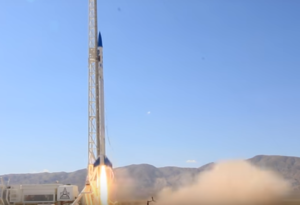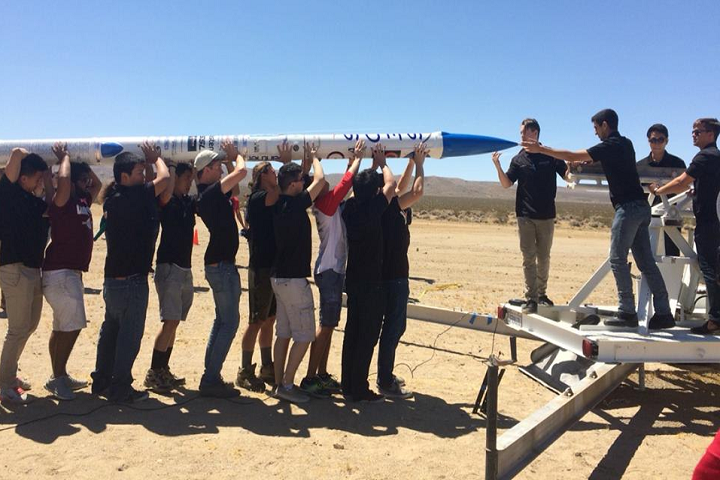
Students for the Exploration and Development of Space (SEDS) is a national nonprofit dedicated to enabling university students to, according to their website, “participate and make an impact in space exploration.” Colleges around the country host chapters of the organization, but the UCSD chapter is the star of the moment. The launch of their 3D printed rocket engine wasn’t just cool, it was historical – according to the student group, they are the first university organization ever to successfully fly and recover a liquid rocket powered by a 3D printed engine.
The endeavor has been in the works for a long time. The engine was printed in March 2015, and the entire rocket project took, according to UCSD SEDS, “100,000+ collective hours of effort over 3 generations of SEDS team members.” Its construction took place at Open Source Maker Labs, a fabrication lab in nearby Vista, California.
“[The Vulcan-1 project] started in the fall of 2014, where the goal for that year was to design three different injector plates and one combustion chamber, design a static-fire system, and test all three injector plates during the fall and winter quarter. The best injector plate with the best data, we would put that on the rocket,” said Kenneth Benedictos, Engine Team Co-Lead, Officer of Internal Affairs, and a founding member of UCSD SEDS.
“The goal was to have that rocket built and flown in Utah, but that was a really ambitious timeline and we ended up taking a whole year to build the rocket,” Benedictos continued. “After we knew the first injector plate we tested–Ignus–worked, we were able to mount that to the rocket. We tried to design the whole project in one quarter–that obviously didn’t work out, because we started fabricating before we even started designing. That was a big lesson we learned in project engineering–you always have to design and analyze before you can even touch a wrench.”
Several pitfalls happened along the way to getting the Vulcan-1 off the ground, and the launch had to be pushed back a few times, but each setback enabled the students to learn, troubleshoot and perfect the rocket’s design so that it the best it could be at the time of launch. The project doesn’t end here, however. In the future, the UCSD SEDS team is looking to build more powerful engines – the recently launched Vulcan-1 is just a “stepping stone.” And unlike the spent jet fuel, the students are far from burned out.
“It’s crazy to see where everything’s gone,” said Benedictos. “It just started as a group of guys who were friends and all had a similar vision. We all liked to deal with things that combust. So that was cool–it was a small team and with a small team, you wear a lot of hats, kind of like a small company…. But now, after every project we’ve added, we need more designers, engineers, everything, and with the success we’re having, to give us more support and enable us to do more work. Each new project, there’s new members with newfound inspiration and motivation. And it’s like creating a movement, a wave that starts off small and grows into one big movement, one big wave that everyone’s riding.”
Watch the historic launch below (or, to see more footage from the day, you can also check out the full hour-plus-long live stream that was aired as it happened). Discuss further over in the Students 3D Print Rocket Engine forum at 3DPB.com.
[Images: UCSD SEDS/Facebook]
